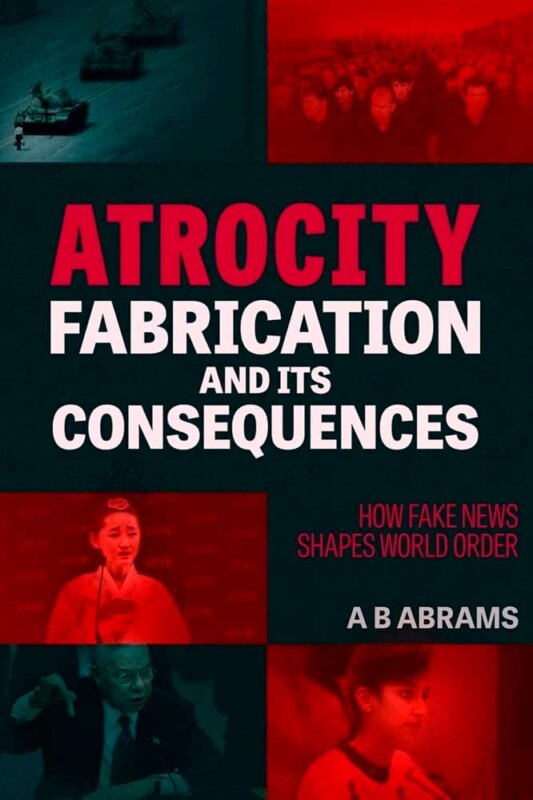T
hroughout history, misinformation was a powerful weapon in the hands of people who fought to maximize their interests. Atrocity fabrication—the invention and reporting of atrocities committed by an adversary without knowledge that they ever occurred—has a centuries-long history at the heart of propaganda and power politics as an effective means of moving public and international opinion.
Now more than ever, the role and scope of misinformation has been able to expand and become an entrenched practice, almost a default extension to any given conflict. Understanding atrocity fabrication and its effects has become crucial to understanding contemporary geopolitics.
Geopolitics expert A.B. Abrams compiles the most significant cases of atrocity fabrication in eleven major conflicts shaping the world order from the Cold War to the present. These include Vietnam and Cuba, the Korean War, Tiananmen Square, the Yugoslav wars, the Gulf War, Iraq, Libya, Syria, and the emerging U.S.-China rivalry. The information sphere currently dominated by Western powers has roots tracing back to early colonial days, which the author initially touches upon to pinpoint a starting point for the evolution of its current-day form.
Atrocity Fabrication and Its Consequences: How Fake News Shapes World Order demonstrates atrocity fabrication in its many forms and varieties, the keys to its success, with the roles played by media and both government and non-governmental organizations in misleading the public, often engrained into larger self-reinforcing metanarratives that form a backdrop to new bits of information.
Abrams highlights how atrocity fabrication is used, and the consequences it has for the populations of the targeted countries, often paving the way for real atrocities such as military interventions committed against them on even larger scales of depravity than those described in the fabricated narratives. Furthermore, atrocity fabrication enforces an interventionist “World Order 2.0” by furthering Western geopolitical interests, an order of conditional sovereignty held by Western opinion of affairs elsewhere in the world, which, conceptually and in practice, has disastrous consequences.
Case by case, Abrams shows how its use can provide pretext for a range of hostile measures against its targets by triggering public moral outrage, transforming wars of unprovoked aggression into those of liberation, turning blockades to starve enemy civilians into humane efforts to pressure abusive governments under the moralistic label of sanctions, and delegitimizing and silencing criticism of one’s actions under accusations of siding with injustice.
Not only is understanding atrocity fabrication important to debunk misinformation about a set of events, but it is also reading how challengers of Western power will continue to be assailed. Atrocity Fabrication and Its Consequences provides an important selection of atrocity fabrication history which is crucial to understanding this mode of action on a broader context of international affairs. The book is a revealing account of how perception is reality by providing history, context, and analysis for a trend that is here to stay.
A.B. Abrams, Atrocity Fabrication and Its Consequences: How Fake News Shapes World Order (Clarity Press, 2023) ISBN: 978-1-949762-70-9, 424 pages
Recommended





